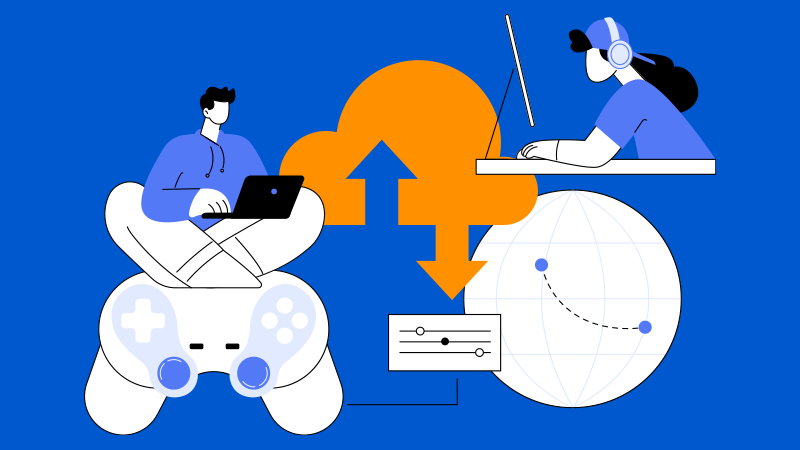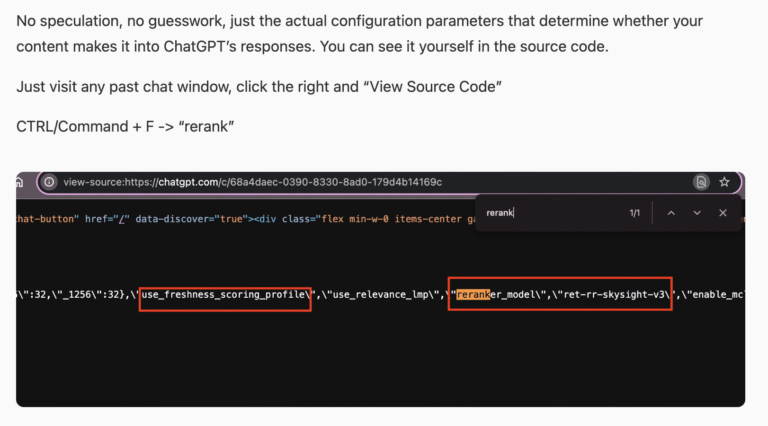
A smooth, responsive gaming experience is essential for both casual players and competitive gamers. When milliseconds can mean the difference between victory and defeat, reducing gaming server latency is critical. In this comprehensive guide, we’ll explore what impacts ping and latency, why dedicated gaming server hosting matters, and more than ten actionable ways to achieve a lag-free environment—ensuring your gaming servers deliver peak performance every session.
Understanding Gaming Server Latency
Gaming server latency—commonly referred to as ping—is the time it takes for data to travel between a gamer’s device and the game server. Lower latency translates to more immediate responses, smoother gameplay, and a competitive edge. High latency, on the other hand, causes delays (lag), missed opportunities, and player frustration.
Key Entities Associated with Gaming Server Latency
- Ping/RTT (Round Trip Time)
- Packet loss & Jitter
- Bandwidth
- Dedicated servers / Bare metal servers
- Network infrastructure
- Data center proximity
- Server CPU & RAM
- NVMe SSD storage
- DDoS protection
- Quality of Service (QoS)
- Wired vs wireless connection
Why Dedicated Gaming Server Hosting Makes a Difference
Hosting your games on a dedicated gaming server ensures exclusive access to server resources—CPU, memory, and bandwidth—eliminating the competition that occurs with shared hosts. This results in reduced lag, higher stability, and the ability to support more concurrent players without sacrificing performance. Gaming server hosting providers often offer customizable hardware, enterprise-grade NVMe SSDs, and high-bandwidth connections, all of which are essential for reducing latency.
How Hardware Architecture Drives Gaming Server Performance
When it comes to gaming server hosting, hardware architecture is the backbone of low-latency performance. Today’s leading gaming servers are powered by multi-core processors such as Intel Xeon or AMD EPYC, which excel at handling concurrent player connections and physics calculations. DDR5 ECC RAM delivers higher bandwidth and superior error correction, reducing memory-related bottlenecks and ensuring smooth multi-threaded gameplay.
NVMe SSDs, with their direct CPU access and massive parallelism, minimize storage latency—crucial for games with frequent world state changes or large asset streaming. By investing in high-frequency CPUs, ample RAM, and enterprise-grade SSDs, gaming operators can dramatically reduce tick rate delays and provide instantaneous response times for all players.
Leveraging Advanced Network Infrastructure and Data Center Standards
Latency isn’t just about what’s inside your server—it’s also shaped by the quality and design of your network infrastructure. The best gaming server hosting providers utilize BGP-optimized networks that automatically select the fastest route for game data, reducing the number of internet hops and bypassing congested paths. Multi-provider bandwidth connectivity ensures resilience and consistent speeds, even during peak traffic.
Hosting in Tier 3+ data centers brings added benefits like redundant power supplies, advanced cooling systems, and physical security protocols, all of which help maintain uptime and prevent performance dips. For games targeting global audiences, deploying servers in multiple geographically distributed data centers further minimizes lag for players worldwide.
Diagnosing and Addressing Latency with Proactive Monitoring
Even with top-tier hardware and infrastructure, ongoing monitoring is essential to maintain a lag-free environment. Utilize real-time network monitoring tools to track ping, packet loss, and jitter across your gaming servers. Set up alerts for abnormal latency spikes or bandwidth saturation, enabling rapid response before players are affected.
Regularly analyze logs to identify patterns—such as time-of-day slowdowns or region-specific delays—that may indicate routing issues or DDoS attacks. Implement server health dashboards to monitor CPU, RAM, and disk utilization, ensuring no component becomes a performance bottleneck. By taking a proactive approach to troubleshooting, you can quickly isolate and resolve issues, preserving a seamless gaming experience.
Why Low-Latency Gaming Servers Matter
Low latency is more than a technical metric—it’s the foundation of enjoyable, fair, and competitive online gaming. Whether you’re hosting battle royales, MMORPGs, or real-time strategy games, minimizing lag means better player retention, higher satisfaction, and more successful gaming communities.
Ready for Lag-Free Gaming?
Leveraging these strategies can transform your gaming server hosting environment and elevate your players’ experience. For those seeking robust, customizable, and high-performance dedicated gaming server solutions in Asia or North America, providers like Dataplugs offer enterprise-grade hardware, low-latency network architecture, and 24/7 expert support in Tier 3+ data centers.
Experience the benefits of optimized latency and seamless gameplay—explore dedicated gaming server options today and give your community the edge it deserves. Visit Dataplugs Dedicated Game Server to get started or contact us today via live chat or email at sales@dataplugs.com.
Tips For Gamers: 12 Proven Ways to Reduce Gaming Server Latency
Whether you’re a casual gamer or aiming for the leaderboards, network latency can make or break your gaming experience. Even the best hardware and fastest servers can’t help if your own connection is laggy or overloaded. The good news is there’s plenty you can do on your end to ensure your gameplay is as smooth and responsive as possible. Here are 12 proven, player-focused strategies to minimize lag and maximize your performance:
- Use a Wired Ethernet Connection
Connecting your gaming device directly to your router with a wired Ethernet cable is one of the most effective ways to lower latency. Wired connections are far less affected by external interference compared to Wi-Fi, ensuring stable speeds and consistently low ping. Use a high-quality Cat 6 or better cable for reliable performance, and plug it straight into your router to avoid unnecessary splitters or hubs that may degrade the signal. - Close Background Applications
Before you start gaming, make sure to close any applications that might be using your bandwidth in the background. Streaming platforms, software updaters, cloud sync tools, and even web browsers with multiple tabs open can all consume network resources. Also, check that game launchers aren’t downloading updates while you play, as these can cause sudden spikes in ping and disrupt your session. - Prioritize Gaming Traffic with QoS
Take advantage of your router’s Quality of Service (QoS) feature if available. By prioritizing your gaming device or specific game traffic, QoS helps ensure your gaming packets are sent first, even when the network is busy. This can be especially beneficial in homes where multiple people are streaming, downloading, or using smart devices at the same time. - Optimize Your Wi-Fi Network
If you need to use Wi-Fi, optimize your setup for the best possible connection. Always connect to the 5GHz band, which is faster and less crowded than 2.4GHz. Place your router in a central, elevated location, away from walls and electronic devices. Consider upgrading to a modern Wi-Fi 6 router, and if your home has dead zones, look into mesh Wi-Fi systems or range extenders to maintain strong, steady signals. - Regularly Update Network Drivers and Firmware
Keeping your network adapter drivers and router firmware up to date can help resolve bugs, improve compatibility, and enhance overall network stability. Manufacturers frequently release updates that optimize performance and address security vulnerabilities. Set a reminder to check for updates at least once a month to keep your network running smoothly. - Select the Nearest Game Server
When your game offers a choice of server regions, always select the one closest to your physical location. The shorter distance means data has fewer “hops” to make, significantly reducing round-trip time and delivering lower ping. Even a difference of just a few milliseconds can have a noticeable impact on real-time gameplay, especially in competitive titles. - Benchmark and Monitor Your Network
Regularly test your internet speed and latency using online tools before you play. Monitoring your in-game network statistics can help you spot issues early, such as sudden spikes in latency or packet loss. Knowing your baseline performance makes it easier to troubleshoot problems and ensures you’re always aware of your network’s health. - Minimize Network Usage in Your Household
Coordinate with others in your home to avoid heavy internet usage during your gaming sessions. Streaming 4K videos, large file downloads, or video conferencing by other users can quickly saturate your bandwidth, leading to higher latency for everyone. Some routers also allow you to schedule bandwidth usage or set limits during key gaming hours. - Adjust In-Game Network Settings
Many games offer network settings like tick rate, data rate, or network smoothing. Tweaking these can help you maintain a more stable connection if you experience lag. Lowering the update or tick rate, or disabling features like voice chat, can reduce bandwidth demands and help keep your ping steady. - Upgrade Your Internet Plan
If you’re consistently experiencing high latency or slowdowns, your current internet plan might not be sufficient for your gaming needs. Upgrading to a higher-speed plan, preferably with fiber-optic or cable technology, can offer lower latency and more reliable performance. Make sure your router can handle the increased speeds to get the most out of your new plan. - Use a Gaming VPN
In some situations, a specialized gaming VPN can help reduce ping by improving the route your data takes to the game server, especially if your ISP’s routing is inefficient. Look for VPNs designed for gaming, and always test the connection before committing, as VPNs can sometimes increase latency depending on your location and the VPN server. - Optimize Your Hardware
Make sure your PC or console meets or exceeds the recommended system requirements for your games, with special attention to the network adapter, RAM, and CPU. Upgrading outdated components can remove bottlenecks that contribute to lag. Also, keep your hardware well-maintained and free from unnecessary background processes for the best possible gaming experience.
Additional Tips for Gamers
- Benchmark Your Network: Use speed tests to monitor ping, download, and upload speeds. Compare results over time to spot issues.
- Optimize Player Hardware: Ensure client devices meet or exceed recommended specs for CPU, RAM, and network adapters.
- Reduce Physical Interference: Place routers in central, elevated positions and away from obstructions or electronic interference.
- Upgrade Internet Plans: For both server hosts and players, invest in higher-speed plans and fiber-optic connections where available.





